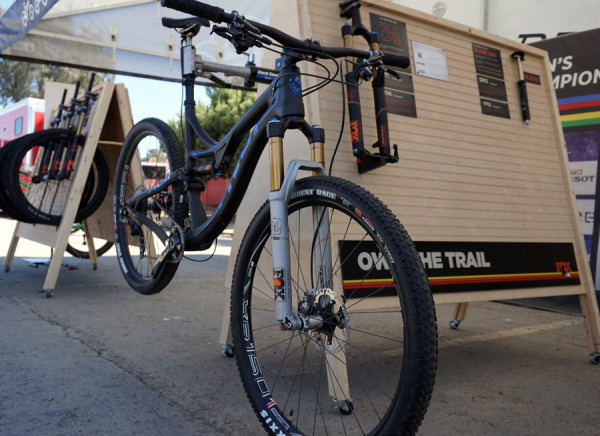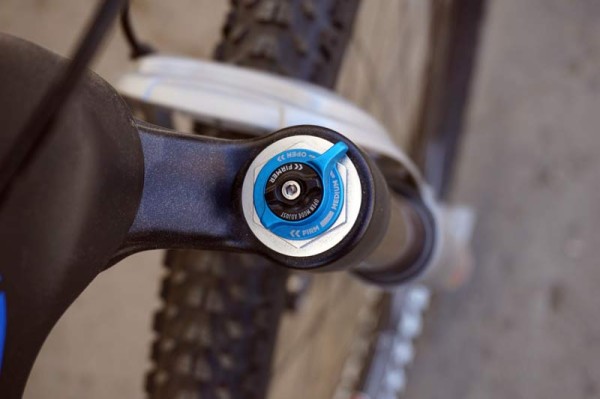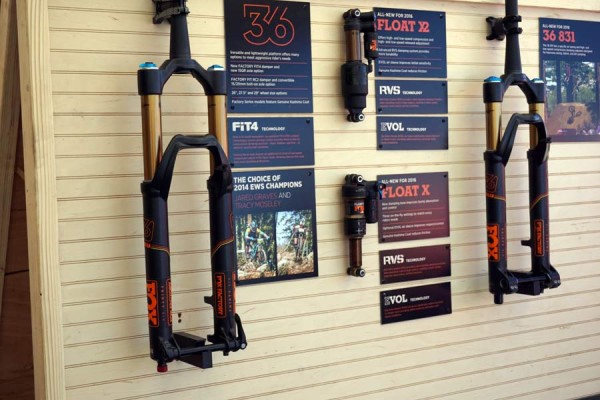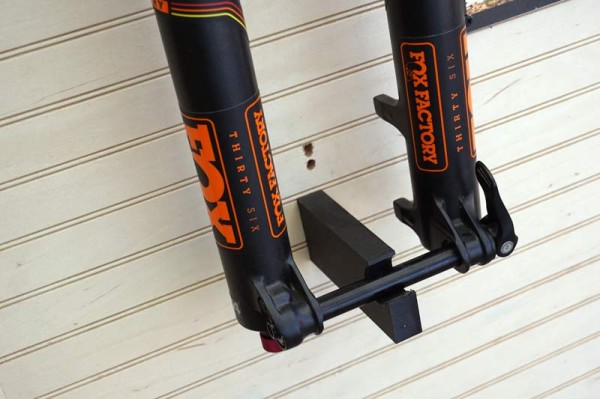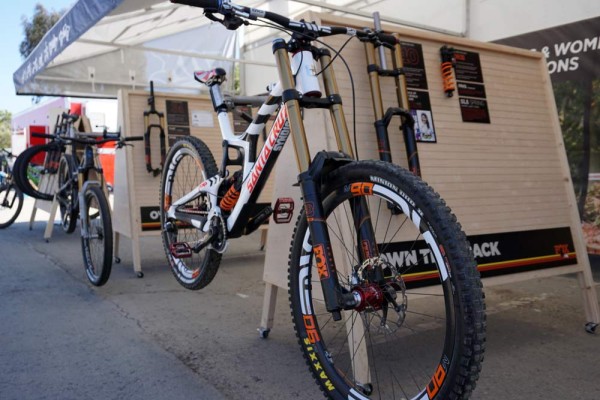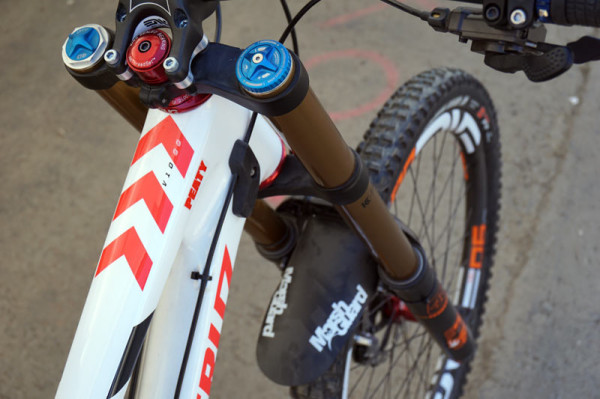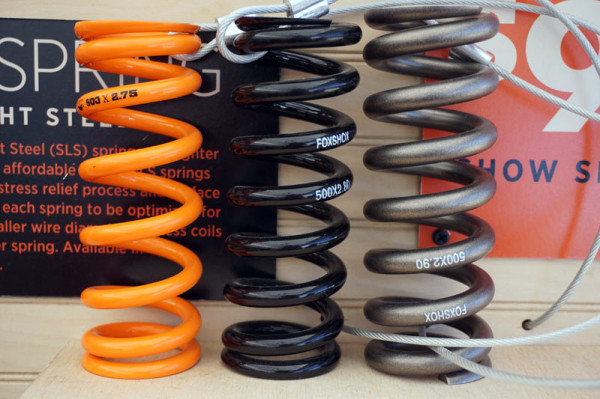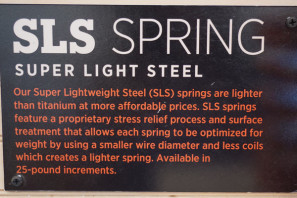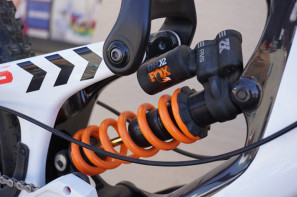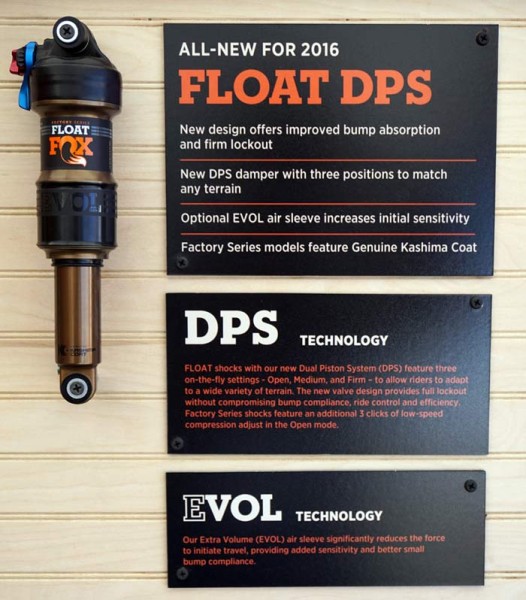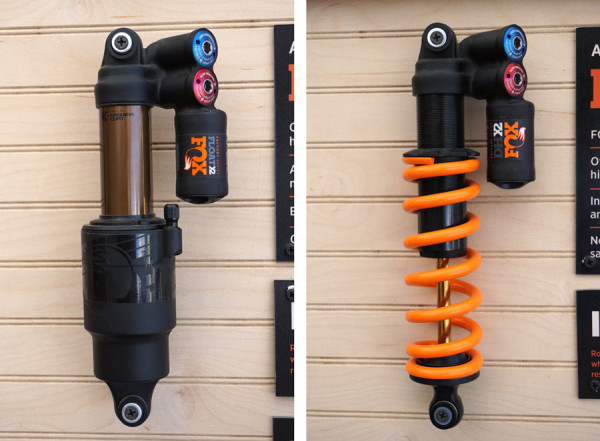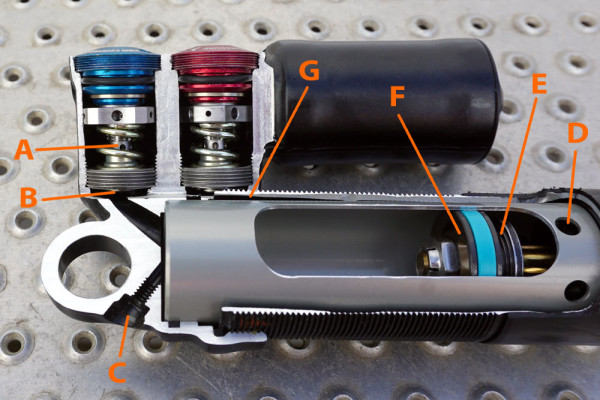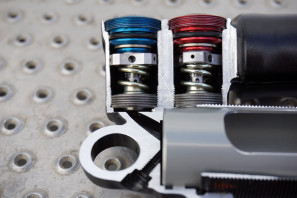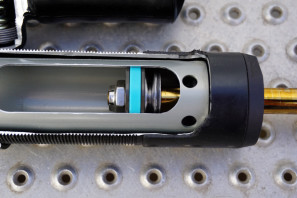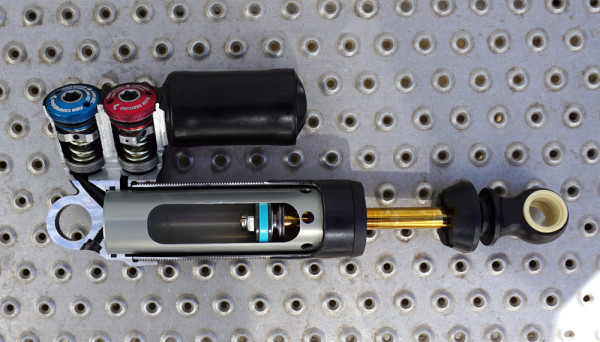The transition to the 2016 Fox Racing Shox mountain bike suspension fork lineup all started with the 2015 36’s switch to a new air spring. It introduced a full air system with check valves to equalize air pressure between the positive and negative chambers, dropped weight and improved performance. Now, that same air system can be found across the entire line, from the XC-oriented 32 to the trail/enduro-ready 34 and 36 to the downhill destroying dual crown 40. Likely, the same 100-130g weight savings can be expected across the line, too!
The progression continued with the announcement of the all new, fourth generation FIT4 damper on the 34 a few weeks ago. The new system moves away from the CTD (Climb/Trail/Descend) modes to Open/Medium/Firm. Similar in theory, except that they added much better support in the open mode compared to the all-but-unusable Descend mode that would simply blow through the travel way too quickly and easily. Plus, the in-setting micro adjustments have moved from the middle setting to the Open setting, giving you even more control over how the fork acts when wide open. The FIT4 damper can now be found in the 32, 34 and 36 forks as an option, and there are no more open bath cartridges on any forks.
Out back, the expanded air volume cans and upgraded damping can now be found on the Float and Float X, and we’ve got a cutaway look at the new dual high/low speed compression and rebound circuits of the DHX2 and Float X2…
The 32 keeps the same chassis as the 2015 model, with one chassis for the 100mm travel version and a bit beefier one for 120mm and 140mm. Even they admit, though, that more aggressive riders are going to want the 34 over a long travel 32.
If you’ve read our Suspension Setup Series, you’ll know that most experts recommend running your suspension in full open mode as much as possible to take full advantage of its performance benefits. With the old CTD forks, that simply wasn’t practical unless the air chamber was overinflated to compensate for its tendency to dive. The new FIT4 damper solves this by making the Open mode better (blue dial moves between Open, Medium and Firm) and giving you a wide range of adjustment within that setting (black dial). This same dial is now on the 34 and 36, too. We covered the 34 in detail here if you’re looking for more on that model.
Also note the new silver color option to go with the matte black on the others shown here.
In Fox’s own words.
Moving up the line, the 34 adds a 27.5+ model that expands the space between the legs and uses the 15×110 axle standard to fit plus-sized tires in there. As we suspected when they teased it, the crown and arch are actually pushed out more than just 10mm extra, accommodating a slightly-more-then-plus-sized 3.25″ tire. The dropouts are then inset slightly to keep axle and hub spacing correct.
Even though the 36 was all-new for 2015, they went ahead and added new versions of it. Now you have a wide selection of 36mm stanchioned forks to meet your needs from trail to enduro to freeride to dirt jumping and slopestyle riding.
On the right, the new 26″-wheel-only 36 831 replaces all 34 831 DJ forks with the bigger stanchions. It uses the same air spring and high/low speed compression controls as the 2015 36, just tuned differently and available with only 100mm of travel. In one bystander’s words, this is what the 831 always should have been. It, along with the 32, are the only single crown forks still available for 26″ wheels, and only those 26″ wheel versions will be available with a 1-1/8″ straight steerer. All other single crown forks are tapered steerer and 27.5 or larger wheels.
On the left, the longer travel 36 gets split into two versions, the carryover 36 RC2 we tested with the standard FIT cartridge and slightly updated tuning, and the new 36 FIT4 that gets the same damper updates as the 34. Since this model introduced the new air spring system in 2015, that part’s unchanged across the 36 lineup.
The 36 FIT4 will have 140mm, 150mm or 160mm in stock configurations, and only in 27.5 and 29er. The RC2, which has separate high and low speed compression adjustment dials on the top of the leg (right photo) will have 150/160/170/180 millimeter travel options. There are some internal travel adjustments that can be made between some of the sizes, best to err on the long side if you ever think you’ll be dropping it down.
The 36 RC2 keeps the bolt-on axle that’ll convert to 20mm, same as what we’ve tested. The new 36 FIT4 gets a more common quick release 15mm thru axle, which may save a bit of system weight over the RC2, but official weights won’t be published until about May 1 when their website changes over.
Both the 36 RC2 and the 40 get a new rebound circuit that helps it recover faster, particularly under deep compression. They did this by refining the high speed rebound part of the circuit, which is fixed internally. The low speed rebound is still externally adjustable.
The Kabolt will be offered aftermarket only and should fit any fork using a QR thru axle to save 40 grams if you don’t mind using a 6mm hex tool to remove your wheel. Black is available in June, orange in August.
The 40 gets the new air spring, too, which helps it drop about 130g over 2015 models.
The 40 keeps the RC2 compression dial up top on the air-sprung model, which we believe is a more fitting system for such a long travel fork, and also gets some tuning updates and the quicker rebound mentioned above. The 40 maintains its straight steerer and is available with 203mm travel for both 26″ and 27.5″ wheels, and a coil sprung version is available, too.
Honestly, we were half expecting the RC2 system to replace CTD on all forks for 2016, but the new three-position deal seems promising and indeed did feel much better on our parking lot bounce tests. Early reviews elsewhere on the Interwebs seem to reinforce that, and we’ll have our own test samples in shortly.
2016 FOX SHOCKS
For coil shocks, Fox has introduced a new SLS (Super Light Steel) upgrade spring that’s using the same material as ultralight valve springs in drag racing cars. That lets Fox use thinner coils to drop weight, so much so that its lighter than a titanium spring…anywhere from 20g to 100g less. And it’s half the cost.
It’ll work on all their older models, too. Available for an upcharge of $130 aftermarket or at the time of new shock purchase. Shown at right on Steve Peat’s DH bike.
The Fox Float DPS shock was introduced at the same time as the new 34, using a new dual piston system inside the damping circuit to provide a firmer pedaling platform. It also introduced the EVOL (Extra VOLume) negative air canister, which they say makes movement easier to initiate for better small bump sensitivity and a more linear spring curve.
For 2016, the Float X adds the EVOL, too, and an updated tune called RVS that balances the damping distribution between the valves in the main body and the reservoir. The primary compression circuit inside the main shaft is factory set depending on the frame it comes on and handles a big part of the compression. The blue lever controls flow of oil into the reservoir, which is the secondary effort at controlling compression and let’s you fine tune it to your preferences. The black knob on top of it adds three more clicks of low speed adjustment within the Open mode.
The first time we spotted something that could have been a dual high/low speed compression and rebound adjustment shock was at Interbike 2013. More recently, prototypes has shown up at races and on athlete bikes. Now, finally, we’ve got the official details.
The new Float X2 (air) and DHX2 (coil) shocks have external adjustments for both high and low speed on both rebound and compression. Plus, there are two new secondary compression dampers supporting the main circuit: RVS and a big hit unit inside the main shaft to deal with severe impacts.
For those new to suspension technology, here’s a primer: Damping is simply controlling the flow of a medium (usually oil) in an effort to control the movement of the suspension. Without it, a spring would be like a pogo stick. With it, the rate at which it loads (compression) and unloads (rebound) is controlled. Done properly, it helps keep your tire in contact with the ground instead of bouncing around uncontrollably. All modern suspension has some manner of compression and rebound circuit. Good ones put controls for both circuits on the outside of the fork or shock to let you adjust it to suit your needs. Really good ones separate those controls for high and low speed damping because the more control you have over how it works, the better you can make it work for you. Assuming you know what you’re doing, of course, which is why we put together the comprehensive Bikerumor Suspension Setup Guide as a free download. These two new shocks take things even further with new intermediate and extreme damping methods on top of the dual external controls, which is quite impressive.
Here’s how it works:
The primary compression damping circuit (blue knob) uses flow ports (A) to control the low speed damping. When oil can’t flow through them any faster, it starts pushing the spring back to open up the high speed circuit. There’s also a new RVS (Rod Valve System) (B) mini shim stack in front of it all that’ll open up on the first bit of a high speed hit to smooth the transition from low to high speed compression damping, helping keep traction through stutter bumps and combo hits.
The rebound circuit (red knob) operates the same way, but without the RVS. The valve that connects the two circuits is not shown in this cutaway. The recirculating oil flow into and out of the rebound circuit moves it along the outside of the main piston (G), hitting the surface metal to cool it before it re-enters the main piston through the large ports on the bottom (D).
That big hit compression circuit (E) is a double-sided, flip flop shim stack. It comes set with the normal strength stack facing the piston’s valve (F), and the heavier shim is behind it, facing the other way and siting idle. If your bike has a really high leverage ratio or you just don’t get the support you want, you can flip it over to make it firmer under big hits.
The bleed port (C) is where the oil goes into the shock in the first place.
The piston valve (F) has large flow ports to allow oil to activate the bit hit compression circuit (E), but that’s only going to happen under extreme conditions.
A couple closeup views, click to enlarge.
And the whole thing. This one’s for the coil-over DHX2, but internals are the same for the air-sprung Float X2. The larger blue and red knobs control the high speed damping, the silver bolt in their centers controls low speed. Each one has 24 clicks, and each one is modular if you ever needed to swap one out. The Float X2 also gets the EVOL air canister, further enhancing small bump compliance and mid-stroke support.
Both will come in 7.875×2.25, 8.5×2.5, 8.75×2.75, 9.5×3.0, and 10.5×3.5 sizes, and the Float X2 adds a 7.785×2.0.
